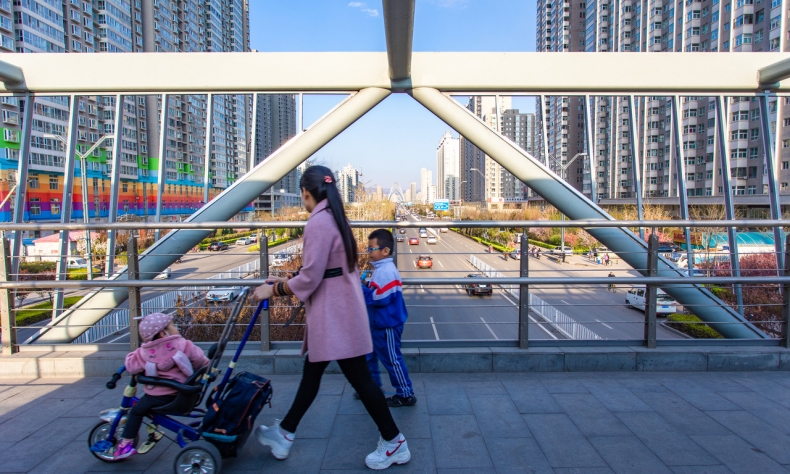China’s Largest-Ever Census Reveals More Than Just Population Growth

China recently released the findings from its 7th population census. While it revealed what many already knew – slowing population growth and a declining birth rate – the census also provided a rare snapshot into modern China.
After months of calculating data from more than 1 billion people, the results from China’s once-in-a-decade census have finally been released.
Conducted between November and December last year, the mass survey required over 7 million surveyors to hit the streets and phones in the largest collection of data ever recorded in the country. Questions from the census ranged from car ownership to rent costs, education background to living conditions, as surveyors attempted to collect the key information that would help the government enact policies that would determine China’s future for years to come.
Naturally, since its release by the Chinese National Bureau of Statistics (NBS) on May 11, much of the focus of the census has gravitated towards the country’s population growth, which fell to its slowest rate since the 1960s, and the country’s growing fertility problem.
But this census was about much more than just population growth. Rather, given the scale and size of the information amalgamated, this was a unique snapshot into modern China and a chance to see how policies enacted over the previous ten-years had shaped the country that we see today.
Genders more balanced; workers more educated
For instance, the census revealed that Chinese people are now more educated than ever before in its history.
2020 saw the number of people with a university education rise to 218.36 million, with the number of people in university education per 100,000 nearly doubling compared to 2010. Illiteracy rates have also dropped from 4.08 percent to 2.67 percent over the past ten-years, helping develop a workforce with a higher skill-set that will be crucial to China’s future development going forward.
The census also revealed that China’s male-to-female ratio had hit a record low of 105.07 over the last decade, a big step-up in a country where the preference for male “heirs” over daughters was once so important. The ratio is much closer to that of the global average, according to the NBS’ findings, and highlights the efforts China is making to improve its sex composition.
Urban populations also grew to their largest portion of the population yet, with the share of urban residents rising by 14.21 percent points compared to 2010. This has been contributed to rural migrants now able to attain an urban Hukou – the housing registration document that gives migrants into a new city the same access to services and insurances as native city dwellers.

Two-baby families increase
While the census confirmed the well-known assumption that the overall birth rate in China is slowing, it also surprisingly revealed that Chinese citizens aged between 0-14 years had grown by 1.3 percentage points compared to ten-years ago, making up 17.95 percent of the population.
While a drop in the number of women of childbearing age, couples delaying having children, and the rising cost of childbearing and parenting are set to see the birth rate continue to slow, the uptick is a sign that adjustments to China’s fertility policy – such as dropping the one child policy and allow couples to have two children in 2015 – are having results.
Coupled with the rise in children born as a second child to couples accounting for as many as 50 percent in 2017, and staying above 40 percent over the past few years, there are signs that if further policies are enacted to reduce the burden of childbearing and children’s education, improving the policy system to support child care services and early childhood development, then chances of reversing this trend is possible.
Foreign residents on the rise
The census was also not only aimed at Chinese residents, but also the hundreds of thousands of foreign residents that live in China. And in this respect, the data revealed China to be a much more cosmopolitan country than many realised.
Foreign residents have been increasing in China’s Mainland over the past 10-years, rising from 593,832 in 2010 to 845,697 in 2020. Greater opening-up to international businesses, the relaxing of restrictions on foreign workers entering China and increased policies to entice high quality workers into the country, have been credited with this rise. According to the NBS, foreign residents are not only increasing, but they are also staying longer, with more than 42.2 percent having lived in China for more than 5 years, up 17.6 percentage points compared to 2010.
Part of this can be attributed to the reasons foreign residents are choosing to stay in China’s Mainland. Employment (444,336 people) and settlement (419,517 people) are now the biggest reasons for them to reside in China, a change from study and business ten-years ago. And in addition to the reason foreigners are residing in China changing, where they are choosing to live is also altering. While Guangdong and Shanghai remain in the top three areas for foreigners to live, Yunnan, in Southwest China, has usurped Beijing to join them in the top three locations.
More than just population growth
China’s latest census has therefore revealed much more than just an ageing society. Rather, it has shown China is now more highly-educated, gender balanced, cosmopolitan and urban than at any point in its existence.
It may now be characterised by a higher ratio of older residents compared to younger ones, but it still has an enormous workforce that is crucially better educated and more balanced than at any point in its 70-year history.
That these changes have happened showcases the real findings of the census; that China’s society has progressed and developed enormously over the past ten-years. And while the results of this census pose plenty of conundrums for the government to answer, it has also revealed that the government has more tools in its arsenal to deal with them than ever before.
 Facebook
Facebook
 Twitter
Twitter
 Linkedin
Linkedin
 Google +
Google +







